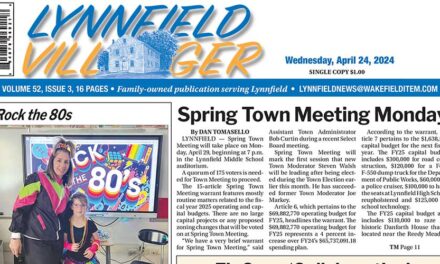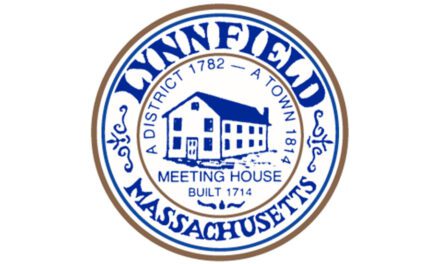Published November 6, 2019
By DAN TOMASELLO
LYNNFIELD — Lynnfield Center Water District officials are looking to overhaul the district’s rate structure this winter, Superintendent John Scenna said during the Board of Water Commissioners meeting last week.
Scenna recalled that the Water Commissioners recently hired Raftellis to assist the board and the newly-formed Rate Setting Committee with helping the district establish new water rates.
“The proposed schedule is to have this done by February,” said Scenna. “We want to have this presented to our customers in February and new rates going into effect on March 1.”
Raftellis manager David Fox said his company is “the largest firm in the country focusing on rate pricing, financial management and consulting services for the water industry.”
“We are not engineers or accountants who dabble in rate studies,” said Fox. “We are economists and finance folks who do rate studies day in and day out.”
Fox said he is looking for LCWD officials to outline their objectives so he can “craft a recommendation accordingly.”
“The Lynnfield Center Water District currently recovers revenues in two main ways,” said Fox. “One is from water rates and the other is from the tax levy.”
Fox said the LCWD’s 10-tier rate structure is “abnormal in the water industry.” He proposed creating a rate model. He explained that this model will allow LCWD officials to understand the impacts associated with “not only changing the revenue coming from the tax base versus user charges, but also the percentage of revenue coming from user charges.”
“It depends on what your priorities are,” said Fox. “We can change the rate structure accordingly.”
Water Commissioner Andy Youngren recalled that the old LCWD board and retired Superintendent Ken Burnham implemented a revised rate structure late last year. He noted both local officials and ratepayers poorly received the revamped water rate changes.
“It went into effect retroactively and it created a big issue,” said Youngren. “It was rescinded and it was too late for us to make it up with the taxes. We know that we need a new rate structure. We can’t do what we did last year. We are trying to figure out where to go with this.”
Scenna agreed.
“What we have discussed is having the tiers be established based on actual consumption within the district,” said Scenna. “It’s important that data drive the process.”
Youngren said town politics could play a role in water rate changes.
“Our biggest user in town is the town,” said Youngren. “The town gets a special rate.”
In response to a question from Fox, LCWD secretary Stefan Taschner recalled that the town was given a discounted rate “when there were tough times for tax revenue.”
“What the board decided to do was flatten out the fee charged for municipal use,” said Taschner.
Taschner noted the LCWD’s water rates were changed in 2006 for the first time in 30 years. He said the Water Commissioners would like the new structure to have ratepayers “paying for usage as opposed to house value.”
Water Commissioners Chairman Rob Almy noted the revised rate structure will need to take into account that the LCWD is undertaking a water supply study that will determine where the district gets its water in the future.
“There will be studies that have to be done that cost money,” said Almy. “Those studies will lead to maintenance of infrastructure or new infrastructure. The rate study is important for not only seeing where we want to be in the next year or two, but also in the next five to 10 years.”
Fox said Almy raised a good point.
“You don’t only want to pay for today’s costs, you want to pay for tomorrow’s costs as well,” said Fox. “Focusing on that five-year window is usually where we have the most bang for the buck.”
Rate Setting Committee member Gayle Richardson noted the town’s recycling rate is lower than neighboring communities. She inquired if a rate increase will improve water conservation.
“That’s a good point,” said Scenna. “That would skew the direction of our revenue toward volumetric rates because now you are paying more. You would be more conscientious of what you’re paying because you are paying that bill four times per year and it’s based on what you use as opposed to the assessed value of your house, which is going to be fixed.”
Fox said moving toward a volumetric rate structure doesn’t necessarily mean water conservation will improve.
“We have done studies on this,” said Fox. “Water is pretty inelastic. You have to set a pretty strong pricing signal in order to get somebody to really change their behavior, especially when you are talking about irrigation and people wanting green lawns. People who want green lawns are typically willing to pay the money for it and don’t really care. It’s hard to change people’s behaviors with a pricing mechanism, but it’s possible. A lot of that is just trying to convey the value of water and why conservation is the right thing to do.”
Fox said it’s important for LCWD officials to communicate the rate changes and why they are being implemented.
“That doesn’t mean they are going to like it, but your customers will be much more willing to accept it if they understand why you are doing what you are doing,” said Fox. “If you pull the wool over their eyes, that is when people get upset.”
Youngren agreed with Fox.
“It wasn’t done properly last time and we have one shot getting it right this time,” said Youngren.




